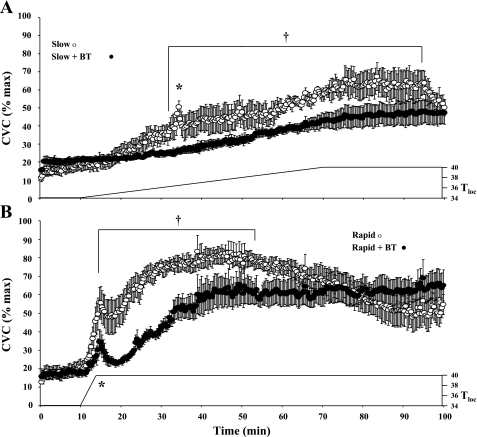Fig. 2.
Results from part 1. Data averaged from all 7 subjects. CVC responses to slow local heating (A) and rapid local heating (B) from both control sites and sites pretreated with BT are shown. Slow local heating causes a marked axon reflex (*) and a pronounced peak vasodilator response. Under conditions of adrenergic blockade with BT, the axon reflex was abolished and a lower peak vasodilator response achieved. Rapid local heating caused a pronounced axon reflex and a greater peak vasodilator response at the untreated site. Pretreatment with BT reduced (P < 0.05) but did not abolish the axon reflex to rapid heating. BT also causes an attenuated peak vasodilator response to local heating. The untreated sites showed a decline in CVC following rapid heating. This “die away” phenomenon was abolished by pretreatment with BT. †P < 0.05, CVC at these points is significantly higher at the untreated sites compared with that at the BT treated sites for that heating protocol.

